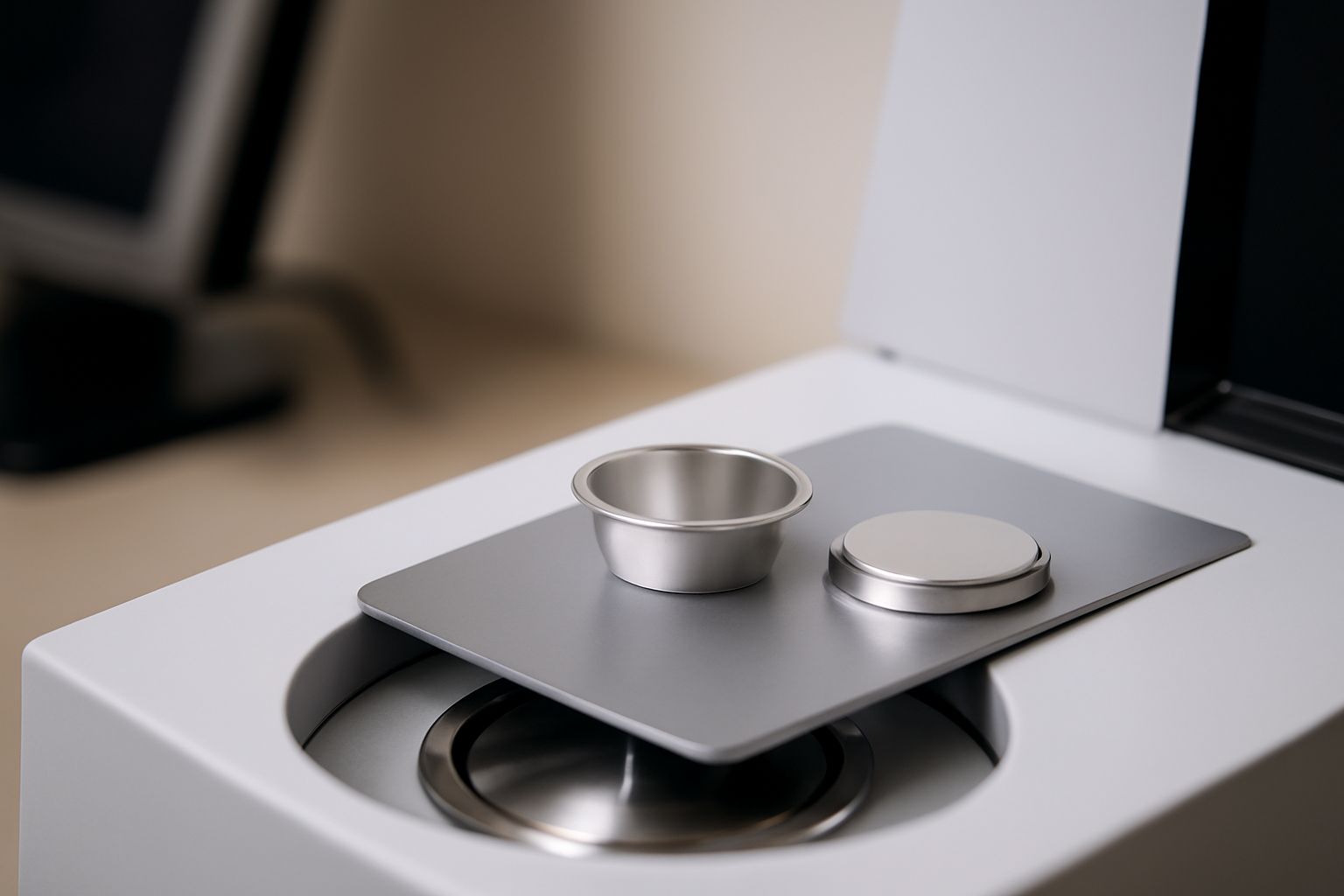Your cart is empty.
shop now
Your cart is empty.
shop now
Using the wrong aluminum pan in polymer DSC analysis leads to weak peaks and unreliable results. Many labs struggle to select the right size or sealing style for different polymer studies.
To choose the best high-purity aluminum pan for polymer DSC, align pan type and features—such as size and seal—with the specific analysis: melting, crystallization, glass transition, or sample volume requirements.

I help labs get better data by matching pan characteristics to the analysis goal. Below, I explain how pan selection changes for melting point, crystallization, glass transition, and varying sample amounts in real-world polymer DSC work.
Imprecise or slow-reacting pans cause broad, shifted melting peaks and make it hard to characterize polymers. Too often, melting temperatures vary between runs due to the wrong pan style.
Choose small, flat high-purity aluminum pans for melting analysis. A tight seal prevents vapor loss, and uniform contact ensures the best heat transfer and sharp melting transitions.
| Pan Feature | Influence on Melting Point | Best Practice | Reference |
|---|---|---|---|
| Small, flat base | Reduces lag, sharper peak | For pure polymer powder | Polymer Journal |
| Hermetic sealing | Prevents sample loss | For volatile or low-mass samples | ScienceDirect |
| Smooth surface | Even thermal contact | Match to DSC tray | Instrument manual |
I always run standards first in small hermetic pans. This method produces tight, reliable melting data for all common and specialty polymers in my lab.
Uneven heating and inaccurate synchronization between pan and sample often create noisy or split crystallization peaks. These errors interfere with accurate analysis of polymer structure.
Use high-purity aluminum pans with medium depth and a vented lid for crystallization. This allows slow cooling, controls pressure build-up, and supports optimal observation of crystal formation in polymers.
| Pan Characteristic | Crystal Peak Quality | Sample Type | External Resource |
|---|---|---|---|
| Medium depth | Promotes uniform growth | Polymer blends, additives | Nature |
| Vented/semi-hermetic lid | Reduces gas build-up, preserves shape | Semi-crystalline polymers | Instrument catalog |
| Certified 99.99% Al | Eliminates artifacts | All compositions | Aluminum |
I standardize on vented pans for crystallization experiments and monitor peak area and onset in at least three repeats. Pan quality affects every detail in polymeric crystal analysis.
A bad pan match to Tg work results in baseline noise and obscured transitions, making it hard to assign glass transitions accurately or compare polymer batches.
Thin, high-purity aluminum pans with excellent mass consistency minimize background and heat lag. Flat lids are best unless you expect volatile species. A tight fit boosts access to weak glass transitions.
| Pan Feature | Improvement for Tg | Polymer Sample | Supporting Source |
|---|---|---|---|
| Uniform thickness | Stable, low-noise baseline | Amorphous polymers | ScienceDirect |
| Consistent mass | Repeatable data across runs | Polymer–copolymer blends | Lab SOP |
| Flat or easy-press lid | Faster setup, less error | Routine Tg mapping | Instrument manual |
I audit pan mass and thickness before important runs. For formal quality checks, I log pan IDs to verify the repeatability of each glass transition result.
Volume and pan size have a direct impact on signal quality and detection reliability in all DSC tests. Too much or too little sample can lead to overflows, poor peaks, or hidden transitions.
Small pans suit microgram- to milligram-level samples, offering the highest peak clarity for limited or precious polymers. Large pans are better for high-mass blends or when phase transitions are weak and need a bigger signal.
| Pan Size | Volume Range (μL) | Ideal Application | External Source |
|---|---|---|---|
| Micro | 5–20 | Trace or specialty samples | Instrument manual |
| Standard | 30–50 | Routine polymer QC | ScienceDirect |
| Large | 80–100+ | Bulk/low sensitivity blends | DSC wiki |
I train my team to estimate ideal sample mass for each pan type and test new sample sets with both small and large pans to optimize detection for challenging polymers.
Selecting the right high-purity aluminum pan for each polymer DSC scenario keeps results sharp, reproducible, and meaningful for R&D, QC, and production labs.
Contact technical support: info@redthermo.com